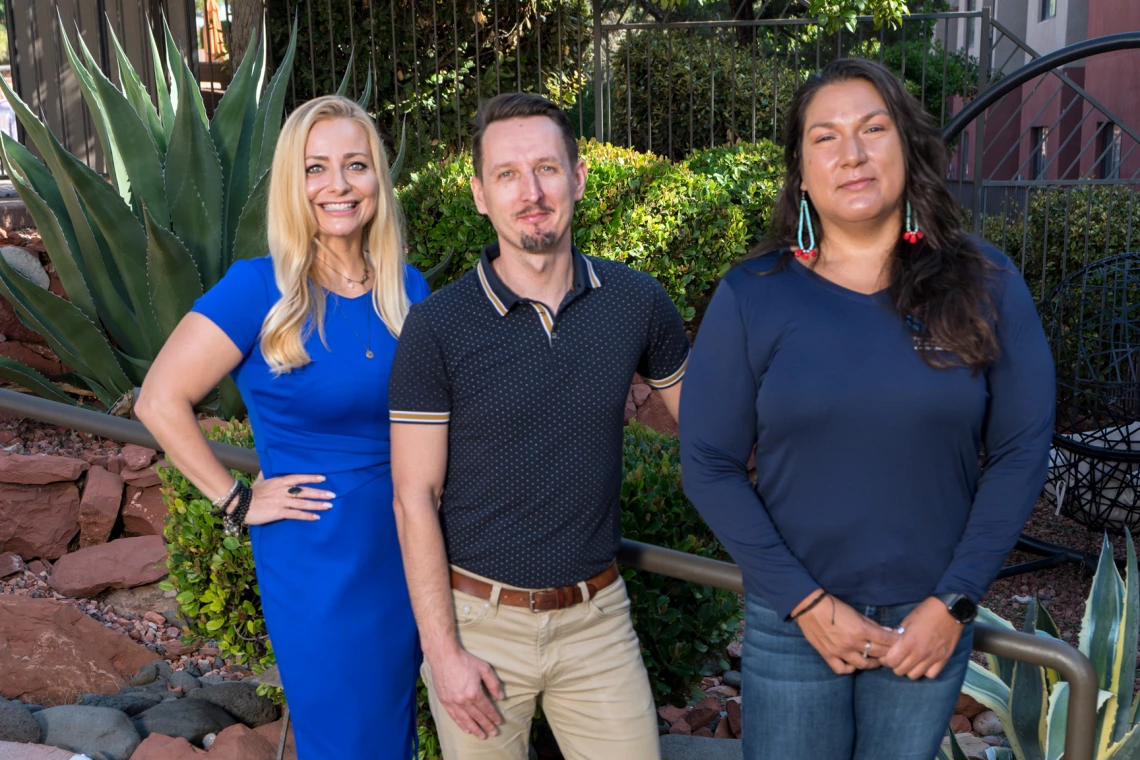Study links vaginal microbiome differences to higher cervical cancer rates in Native American women

From left, Melissa Herbst-Kralovetz, PhD, and Paweł Laniewski, PhD, both of the U of A College of Medicine – Phoenix, and Naomi Lee, PhD, of Northern Arizona University, take a break during a retreat with the Partnership for Native American Cancer Prevention.
Photo by Erin Gramzinski, Mud House Media
Researchers found that protective microorganisms were present at higher rates in non-Native women compared with Native American women
A recent study led by researchers at the University of Arizona Cancer Center and Northern Arizona University found that Native American women were disproportionately affected by vaginal dysbiosis, a disruption in the balance of bacterial that increases the risk of human papillomavirus infection, which can cause cervical cancer.
In Arizona between 2016 and 2020, Hispanic and American Indian/Alaska Native women had the highest rates of cervical cancer, according to the Centers for Disease Control and Prevention.
“Despite vaccination, we still have high rates of cervical cancer within Latina and Native American populations,” said the paper’s senior author Melissa Herbst-Kralovetz, PhD, a professor and director of the Women’s Health Research Program at the U of A College of Medicine – Phoenix, and a member of the U of A Cancer Center and the BIO5 Institute. “Rates in Native American populations are the highest, and that’s why we focused our efforts on better understanding this disparity.”
The paper was published in Cancer Prevention Research. The pilot study was part of the Partnership for Native American Cancer Prevention, a 25-year program between the U of A and Northern Arizona University supported by the National Cancer Institute.
Read more on the University of Arizona Health Sciences website



